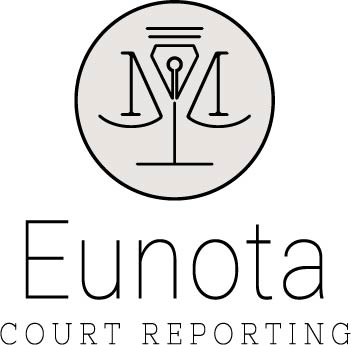Court Reporting in a Digital Age
Court reporting is an essential service to any legal procedure, ensuring that all parties are treated with fairness and collection of evidence is objective and unbiased. Through the years, the tools have changed but the role remains the same. Here’s the scoop on how court reporting is evolving:
Traditional Court Reporting
Traditional court reporting involves a person being present at a legal meeting to record, take notes, and later produce verbatim transcripts of what was said. When asked what a court reporter or stenographer does, most people conjure an image of a Mad Men-styled woman sitting with ankles crossed at a typewriter next to the judge in a court room. This stereotype is actually pretty accurate as 88%* of people working in the field are women and the average age is 53*. In New Brunswick, most public servants and private sector reporters use a program to take notes in plain language with their fast typing skill. Shorthand seems to be used less and less due to the enhanced responsiveness of computer typing equipment. The legal field is slow to change though, because even though transcripts are produced on computers, the typewriter font Courier is still used to this day.
Digital Court Reporting
Digital court reporting is still evolving and has played an especially important role during the COVID-19 pandemic. Digital court reporting can include the use of video recordings and speech recognition software like Dragon for transcription purposes, but there are limits to its usefulness in a legal setting. Digital recording and transcription is an attractive option due to price – it’s generally cheaper to hire a computer than a real person, but the reason for a court reporter (traditional or digital) is to ensure fairness and objectivity. In addition, with an aging population of available court reporters (remember the average age is 53), there may be shortages if there is no one to replace a retiring workforce. With a digital-only system, you will record what was said, but you risk missing important clarifications to the record, spellings, and true meaning because a computer can’t capture nuances (example: saying no but meaning yes) or faulty information (example: wrong date). If you want to capture the true communications of a meeting, it is critical that a court reporter be an active part of the process.
The Future of Court Reporting in New Brunswick
At Eunota Court Reporting, we believe that the future of court reporting will be a combination of traditional and digital methods. With digital options like videoconferencing and cloud storage of files, sharing information and meeting do not have the same barriers that they used to when in-person was the only option. This being said, the core of the court reporter’s role is to be an unbiased third-party who is actively involved in ensuring fairness, and to do that, traditional methods must be employed. Speech recognition software has a place for non-verbatim summaries, but a certified transcriptionist is the only way to capture the real meaning behind a person’s spoken evidence. As a judge, lawyer, defendant, plaintiff, or witness, you want to know that the process is administered as objectively as possible and because of that, court reporters will always have an important role to play in the legal process.
Book Eunota Court Reporting!
You can trust Eunota Court Reporting to take advantage of all helpful technologies yet also lend the attention to detail that only a trained professional can in your legal meeting. Contact us today.
We employ the following digital methods in our practice:
– Secure cloud storage to safeguard against loss
– Videoconference hosting to increase engagement
– Internet connection during meetings to check spellings
We employ the following traditional methods in our practice:
– Court reporter actively engaged in the process
– 100% of transcription is completed by a certified transcriptionist
– Requests for clarification made to ensure accuracy
– Real-time note taking that examiners can refer back to
*https://www.ncra.org/utility-pages/about-ncra/NCRA-Statistics

